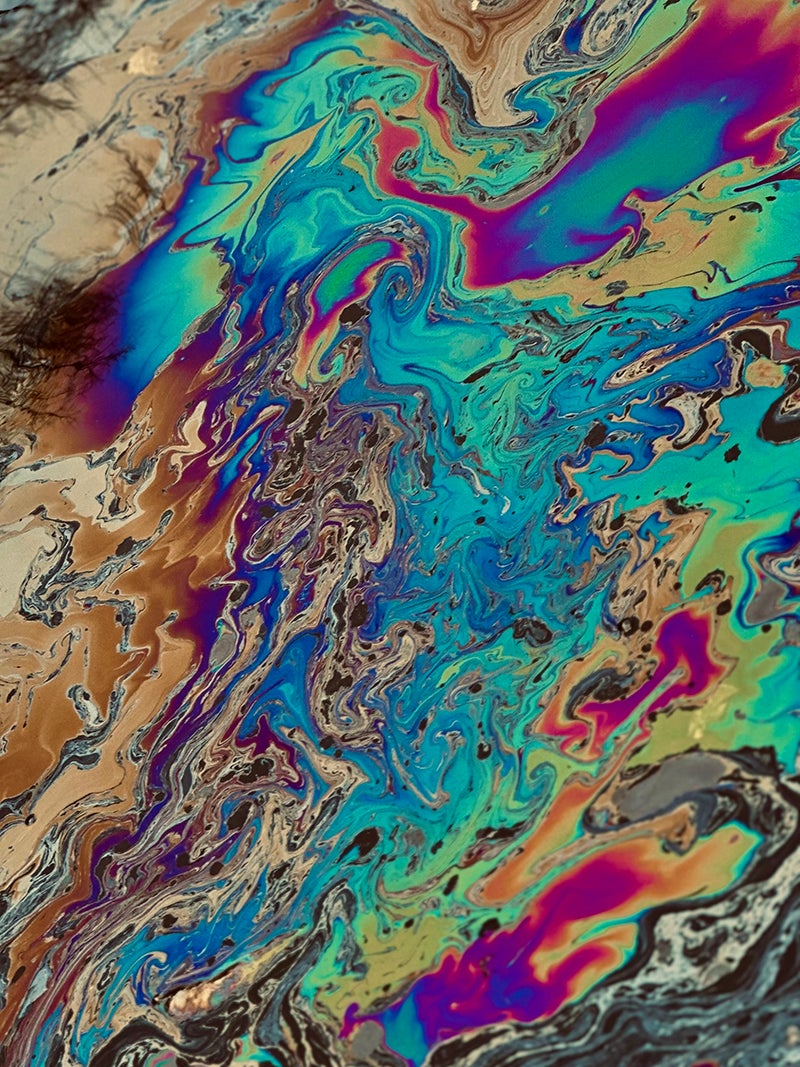PhD student wins second place in Image of Research competition
1

PhD student Marzieh Mansouri was awarded second place in the Image of Research competition at UIC for her photo called “Toxic Masterpiece: The Art of Pollution in the Chicago River.”
The Image of Research is an annual interdisciplinary exhibit competition organized by the Graduate College and University Library to showcase the breadth and diversity of research at UIC. Each year, students enrolled in a graduate or professional degree program at the university are invited to submit an image they created along with a brief précis of how the image relates to the student’s overall research. This year, there were nearly 150 submissions.
Mansouri describes the image as “a mesmerizing piece of abstract art, but it tells a deeper story of pollution and environmental challenges.” The juxtaposition of the image’s beauty and what created it can be found in her research.
Mansouri is investigating gas ebullition, a process in which gas bubbles form in polluted sediments at the bottom of rivers and rise to the surface, carrying pollutants like oils and chemicals with them. These pollutants often come from historical industrial activity, urban runoff, and wastewater discharges that settled into the sediment over time.
“My research focuses on predicting when and where this bubbling happens and what factors drive it, using machine learning and environmental data. This helps us better understand how pollution moves in rivers and how to improve cleanup efforts,” she said.
Her research is crucial since the gas coming out of the riverbed is mostly methane, a powerful greenhouse gas.
“When bubbles rise, they carry heavy metals, chemicals, and other harmful substances into the water. This can harm fish and aquatic life, lower water quality, and even allow pollutants to enter the food chain. It also affects air quality, ecosystems, and human health. By understanding when and where this bubbling happens, we can better protect people and the environment,” said Mansouri, who is working under the direction of Professor Karl Rockne.
She believes her research has the potential to help companies predict gas ebullition and understand the key factors behind it, and supports smarter, more targeted, and cost-effective cleanup efforts.
“This can lead to healthier water, air, and ecosystems, while also raising awareness about methane emissions from aquatic environments. This not only benefits the environment, but also helps organizations make informed, efficient decisions, ensuring better long-term outcomes,” she said.
When she completes her PhD, Mansouri wants to solve real-world problems by working at the intersection of environmental engineering and data, applying machine learning and modeling techniques to create solutions that have a real impact.
“I enjoy the challenge of turning complex environmental processes into clear, actionable insights, and am excited to keep growing my skills and using data in creative, meaningful ways,” she said.
In the meantime, she wants the image of her research to inspire others and bring awareness to issues that impact all of us.
“I hope others see this image as both beautiful and eye-opening. It shows hidden pollution and encourages a closer look at what is happening in our environment and how science can help protect it,” she said.